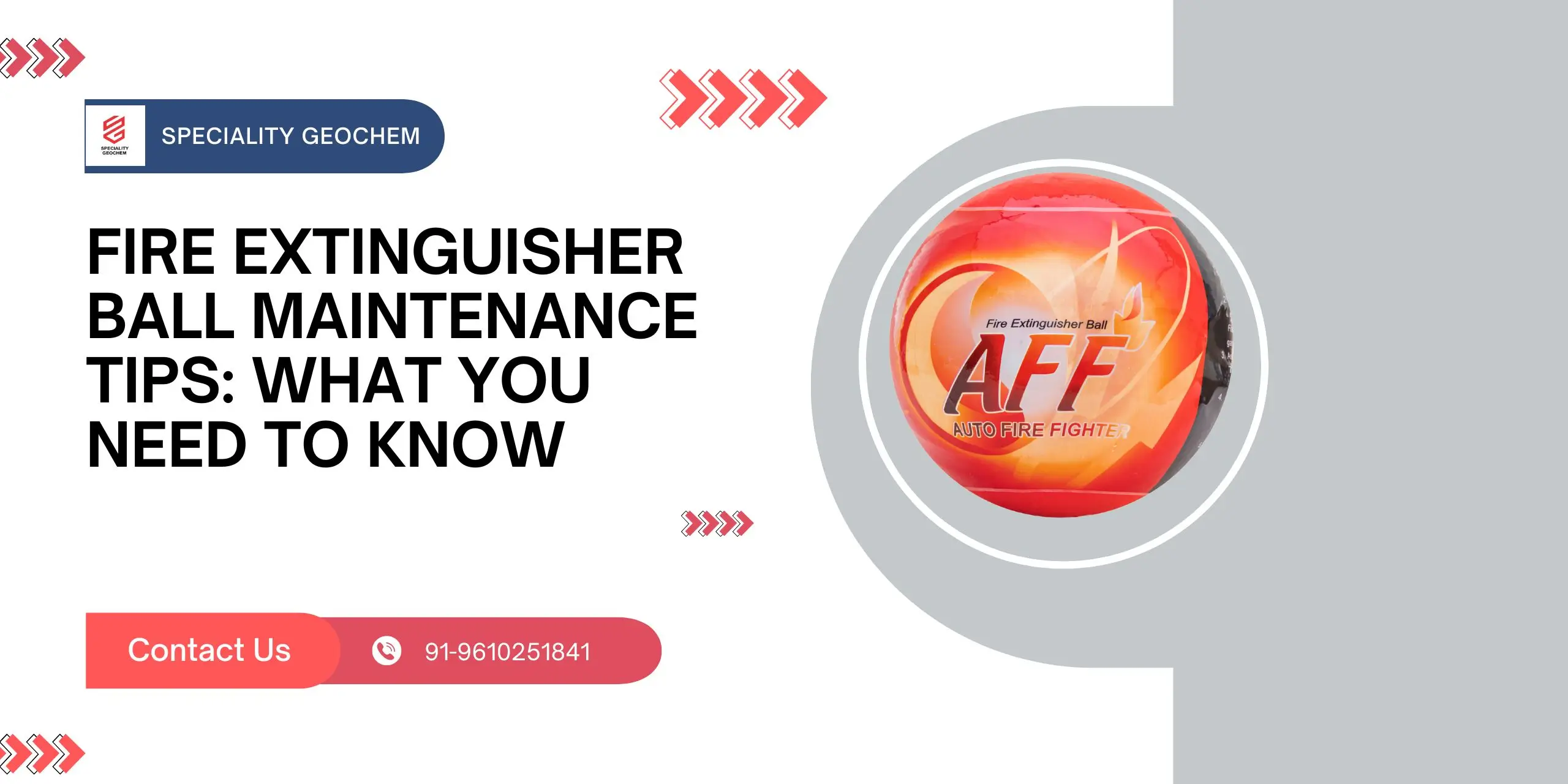Fire safety is one of the most critical aspects of any home, office, or industrial setup. While installing modern fire safety equipment is essential, maintaining them is equally important to ensure long-term reliability. Among the innovative solutions available today, fire extinguisher balls stand out for their simplicity, automation, and instant response to fire outbreaks. However, like any safety device, they too require proper upkeep. In this article, we’ll explore the most practical Fire Extinguisher Ball Maintenance Tips to help you keep your equipment ready for any emergency.
Understanding the Fire Extinguisher Ball
Before diving into maintenance, it’s vital to understand what a fire extinguisher ball actually is. A fire extinguisher ball—often marketed as an Auto Fire Fighter Ball—is a lightweight, spherical device filled with dry chemical powder such as mono ammonium phosphate (MAP). When exposed to flames for 3–5 seconds, it bursts automatically, dispersing the extinguishing agent to douse the fire instantly.
These balls are widely used in kitchens, electrical rooms, warehouses, hotels, vehicles, and factories. Their major advantage lies in being self-activating—no human intervention is required, which makes them perfect for places prone to unattended fire risks.
Why Maintenance Matters
Many users mistakenly believe that once installed, fire extinguisher balls are maintenance-free forever. While they indeed require far less attention than traditional extinguishers, neglecting basic upkeep can compromise their performance.
Regular inspection ensures:
- Reliability: The ball will function correctly in a real emergency.
- Durability: Prevents wear and tear caused by temperature, humidity, or dust.
- Compliance: Meets safety audit standards for homes, offices, and industrial facilities.
- Peace of mind: You can trust that your system will perform when needed most.
These Fire Extinguisher Ball Maintenance Tips help you ensure consistent safety and compliance.
1. Check the Manufacturing and Expiry Date
Every fire extinguisher ball comes with a manufacturing and expiry date, usually printed on its outer surface. The typical lifespan ranges between 5 to 7 years, depending on the brand and environmental conditions.
After expiry, the ball may lose its activation sensitivity or the dry powder inside might harden, making it less effective. Always replace expired units immediately. This simple step is one of the most basic yet vital Fire Extinguisher Ball Maintenance Tips to follow.
2. Inspect the Outer Shell for Damage
The shell of a fire extinguisher ball is usually made of durable plastic designed to burst safely on contact with flames. However, cracks, dents, or scratches can compromise its structural integrity.
Conduct a visual inspection every 3–6 months. If you find visible damage or deformities, replace the unit promptly—even if it hasn’t reached its expiry date. Remember, a small crack can prevent proper activation during a fire.
3. Keep It in the Right Environment
While these devices are designed for various settings, extreme environmental conditions can affect their performance. Avoid exposing the ball to:
- Direct sunlight for prolonged hours
- Excessive heat or cold beyond the recommended range (usually 0°C–60°C)
- High humidity or moisture areas that may corrode the mounting bracket
Install the ball in shaded, dry locations—especially if outdoors or in kitchens. This environmental care is a key part of Fire Extinguisher Ball Maintenance Tips that extends the product’s lifespan.
4. Ensure Proper Mounting and Placement
Fire extinguisher balls can either be mounted on brackets or placed on high-risk surfaces like near electrical panels, gas stoves, or generators. Over time, vibrations or environmental factors can loosen the mounting.
Check that the mounting brackets are secure, free of rust, and positioned at the correct height (typically 1.5–2 meters). A loose or misplaced ball may fail to reach the flames effectively when needed.
5. Clean Off Dust and Dirt Regularly
Dust accumulation may seem harmless, but over time, it can clog the outer covering or fade the printed instructions. This could delay activation or confuse users during emergencies.
Use a soft, dry cloth to gently clean the surface of the ball once every few months. Avoid using water, chemical sprays, or abrasive materials. This simple cleaning routine keeps your equipment visible, readable, and fully functional.
6. Test the Alarm System (if applicable)
Some advanced fire extinguisher balls come with an inbuilt alarm that triggers upon activation. While the ball itself cannot be “tested” without use, the alarm system can often be checked through a small indicator or demo function.
Refer to the manufacturer’s manual for the correct testing process. Regular checks guarantee that both the extinguishing and alerting mechanisms are working as intended.
7. Educate Family and Staff
Maintenance isn’t only about the physical condition of the device—it’s also about awareness and training. Everyone in your home, office, or factory should know:
- Where the fire extinguisher balls are located
- How they function
- How to contact emergency services immediately after activation
Training helps prevent panic and ensures that the fire safety system complements human readiness.
8. Keep Spare Units
Even with proper maintenance, it’s always smart to have backup fire extinguisher balls on-site. If one unit is used or damaged, you can instantly replace it. For large areas, multiple installations across corners and ceilings provide maximum protection.
When purchasing spares, always choose certified manufacturers like Speciality Geochem, known for producing high-quality automatic fire suppression and fire extinguisher systems in India. Their products adhere to industry standards and come with extended service life.
9. Record Your Inspection Schedule
Create a simple maintenance checklist or logbook. Record each inspection date, findings, and replacement details. This habit not only helps you remember when the next check is due but also demonstrates compliance during safety audits.
A sample record may include:
| Date | Location | Condition | Next Inspection |
| 10 Oct 2025 | Kitchen | Good | 10 Jan 2026 |
| 10 Oct 2025 | Generator Room | Cleaned | 10 Jan 2026 |
Following these Fire Extinguisher Ball Maintenance Tips with proper documentation ensures accountability and long-term safety.
10. Replace Immediately After Use
Once a fire extinguisher ball activates—even partially—it cannot be reused. Always replace it immediately after deployment. This guarantees that your premises remain protected for future incidents without delay.
Conclusion
Fire safety is a continuous commitment, not a one-time task. Consistent care and inspection ensure that your fire extinguisher balls remain fully functional when emergencies strike. By applying these Fire Extinguisher Ball Maintenance Tips, you extend the life and effectiveness of your safety systems—protecting people, property, and peace of mind.
Whether used in residential buildings, restaurants, factories, or offices, proper maintenance prevents small sparks from turning into major losses. Regular attention to placement, expiry, and condition can make all the difference when seconds count.
Choose Speciality Geochem, a trusted manufacturer in India known for reliable fire extinguisher balls and automatic fire suppression systems. Our mission is simple—deliver safety, quality, and confidence through innovation. Because at Speciality Geochem, we believe that true fire protection begins with consistent care and trusted technology.

